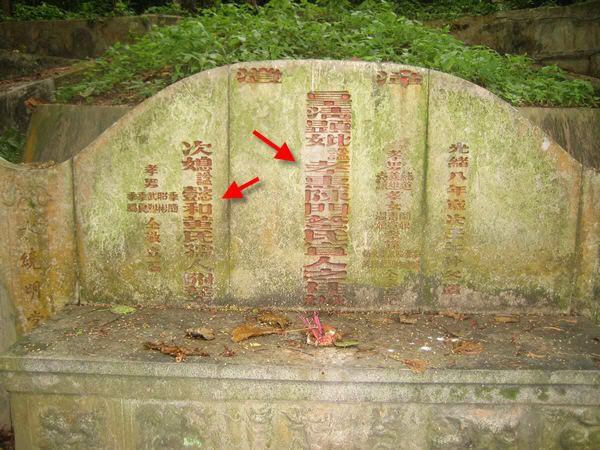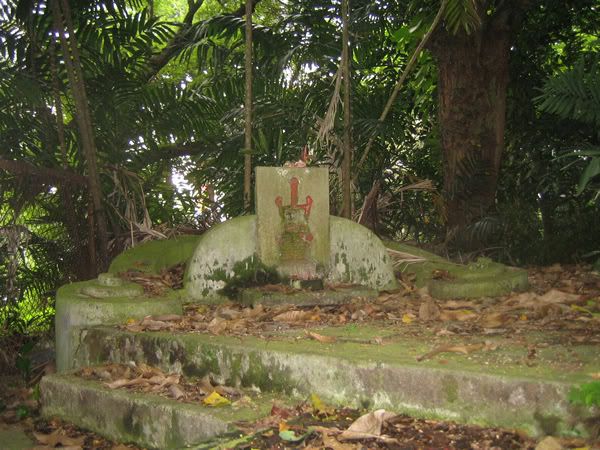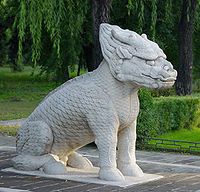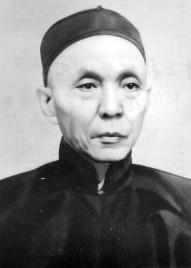From that year, Huang began to help the missionaries with translation
and literary work, since he had received a basic education in the
Confucian classics and wrote well. Apart from helping to translate the
Bible, from 1874 Huang became the key helper with a Chinese newspaper
the missionaries started that year called Zion’s Messenger (Huanshan
shizhe yuebao). Huang used the newspaper as a platform to write articles
advocating a number of modern reforms. His was one of the first Chinese
voices to call for using vaccinations against smallpox, as well as for
putting an end to the practice of foot-binding. In addition, he was a
strong advocate of mission education who favored instruction in English
so that Chinese Christians could tap into Western knowledge and the
field of commerce. Education of women was part of his vision and he
established two private schools, one 1873 and the other in 1885, to
educate his own children, including his daughters.
Starting from the early 1870s, Huang decided to prepare for China’s
traditional civil service examinations. He chose this course because he
saw the numerous conflicts that Chinese Christians experienced with
local society and how they were discriminated against and marginalized
by local gentry. Huang believed that if there were Christians who were
members of the gentry it would improve the situation. He studied hard
and in 1877 obtained the basic
shengyuan degree, which was followed in 1894 by the much more difficult
juren
degree. This was quite an achievement, given the stiff competition for
degrees in the latter part of the Qing dynasty. When Huang traveled to
Beijing in 1895 to take exams for the highest level
jinshi degree
(which he never obtained), the Sino-Japanese War was underway, and he
suffered the pain both of China’s defeat and the loss of his younger
brother, who was a sailor in the navy. Huang then joined other scholars
in Beijing in support of Kang Youwei and his call for China to reject a
peace treaty with Japan and to immediately seek ways to strengthen the
nation.
Upon returning to Fujian, and in light of the dangers facing his
country, Huang decided to leave his work at the Methodist Episcopal
mission and instead seek to promote a Christianized China through
political and educational reform. To this end, in 1896 he used his own
funds to launch a secular Chinese newspaper called Fubao, which was the
first newspaper started by a Chinese in Fujian. It was a two-page paper
published twice a week and it advocated adoption of such reforms as a
parliamentary system and a free press. However, after a year he had to
shut the paper down because it was losing money.
Three years later, Huang was in Beijing again to take the
jinshi
exams when the 100 Hundred Day Reform movement led by Kang Youwei
started. He not only actively supported this, but through a friend from
Fujian who was very close to Kang Youwei and Liang Qichao, he became
directly connected with the leaders of the movement. He himself
submitted eight petitions to the Guangxu Emperor, one of which
recommended adopting pinyin to help with the study of Chinese
characters. However, when the reform movement met with a conservative
backlash and some of its leaders were arrested and executed by the
government, Huang was forced to flee quickly to Fujian, since he was
number eleven on the most wanted list.
Shortly thereafter, Huang decided to start a new settlement of
Chinese in Malaysia in order to escape China’s despotism and Fujian’s
poverty. While in Singapore considering where he might establish such a
colony, Huang met Sun Yatsen and the two soon became good friends.
Huang’s translation into Chinese of a book on American history won Sun’s
respect, and Huang admired Sun’s democratic ideals and commitment to
Christianity. In 1901, Huang traveled with settlers from Fujian to Sibu,
where he founded New Fuzhou. Before long New Fuzhou had a population of
over one thousand Chinese, two-thirds of them Christians. Huang spent
the next three years attending to myriad administrative tasks needed to
get the community established. Unexpectedly, in 1904 he returned to
Fujian, in part because his administration of the settlement did not
generate enough profit to satisfy the local ruler who had supplied the
land.
Back in Fujian, Huang founded the
Fujian Daily News and was a
leader of Fujian activities during the nation-wide anti-American boycott
of 1905, which protested the adoption of exclusion laws by the United
States preventing Chinese laborers from entering the country. While he
avoided harsh anti-foreignism, Huang did not hesitate to strongly and
publicly condemn the American policy.
By this time, Huang had also shifted his political views from favoring reform, as he had in 1898, to supporting revolution.
Young J. Allen, the missionary editor of the influential Chinese language
Globe Magazine
in Shanghai, was a key person in convincing Huang that support for
revolution was a legitimate Christian position. Huang then began to
distribute tracts calling for revolution and became an active supporter
of
Sun Yat-sen,
sending information on revolutionary activities in Fujian to Sun’s
agents in Singapore, who then reported it to Sun in Tokyo. Huang joined
Sun’s Revolutionary Alliance in 1906 and was a key figure in planning
the Huang Gang uprising and recruiting many of those who participated in
it.
From 1907 to 1911, Huang focused primarily on promoting educational
reform by founding 34 Chinese secondary schools in the Min County region
of Fujian, which he made sure taught Western subjects and inculcated
nationalism. Also, in 1909 he was elected to the Fujian Provincial
Assembly, which was part of the constitutional reform program that the
Qing government had been forced to adopt. Huang became one of the
leading members of the legislative body and he proposed numerous
reforms, for instance to ensure better use of Fujian’s natural
resources, to counter opium and gambling, and to introduce penal reform.
In 1911, after the 1910 Wuhan Uprising began to unravel Qing rule in
China, Huang began to spread revolutionary ideology among students at
the Methodist Anglo-Chinese Academy in Fuzhou, where he was Dean. In
addition, he established the Fuzhou Qiaonan Physical Training Society as
a front for the Fujian Revolutionary Alliance where it could train the
students who joined the movement. On the 9th and 10th of November 1911,
Huang and the Fujian Alliance fought against and defeated the Imperial
Army in Fuzhou with the help of these students, and thus brought Qing
rule in the province to an end. As a supporter of Sun, Huang was
appointed head of the Board of Communications for the provisional Fujian
government in November 1911, but his high-level public service soon
came to an end when Yuan Shikai deposed all Sun’s supporters in
September 1912.
Huang spent his remaining years engaged in various community
projects, serving as head of the Board of Trustees for the Fuzhou YMCA,
helping to edit a political newspaper, and being sought out as an
adviser to government officials. He held his Christian faith to the end.
As he lay on his deathbed, he asked his wife to hold up a picture of
Christ for him to see, and asked that the picture be laid on his chest
as he died on 22 September 1924.
Huang Naishang was one of the most influential and impressive Chinese
Protestants of the Imperial era. His experience in ministry and his two
decades assisting missionaries in literary work instilled in him a
strong faith and an informed Christian worldview, as well as a
familiarity with modern knowledge. His Confucian upbringing and success
in the civil service examinations were extremely rare for Chinese
Christians at the time and allowed him to have significant social
influence. Huang used this influence to seek the reform and
Christianization of Chinese society through educational and political
change. He described his motivation to do these things as Christian
altruism, which combined Christian notions of personal sacrifice for the
benefit of others with Confucian ideals of public service. Huang’s many
years of ministry and community involvement touched numerous lives and
did much to enhance the credibility of the church and of Christianity in
China.
Three daughter of 黄乃裳:
1) 黄端琼 Margaret Wong Tuan Keng married to Lim Boon Keng
2) 黄淑琼 Ruth Huang Shu-Chiung married to Wu Lien-Teh
3) 黄珊琼 Huang Shan-Chiung married to Seow Poh Quee








.jpg)







